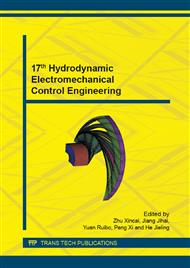p.175
p.182
p.187
p.192
p.201
p.205
p.212
p.220
p.226
Distributed Embedded Control Architecture of a Leader-Follower Mobile Robot Formation
Abstract:
Mobile robots have been widely used for the good adaptability, payload capability. Robot cooperation brings benefits for the task in a multi-robot team. In this paper, the modular hardware design of a leader-follower mobile robot team is discussed, including the distributed control architecture and the electronic system of each robot of the team. The basic idea behind this paper is to introduce the design of the hardware and distributed control architecture, which mainly manages the distributed control system, consisting of microcontroller modules connected through a data bus. The research has a potential applying prospect in mobile robot tracing and locating in the future.
Info:
Periodical:
Pages:
201-204
Citation:
Online since:
July 2015
Authors:
Keywords:
Price:
Сopyright:
© 2015 Trans Tech Publications Ltd. All Rights Reserved
Share:
Citation:


